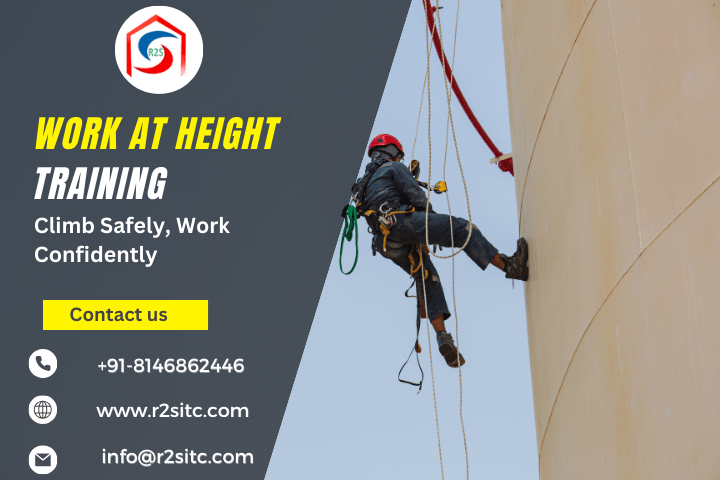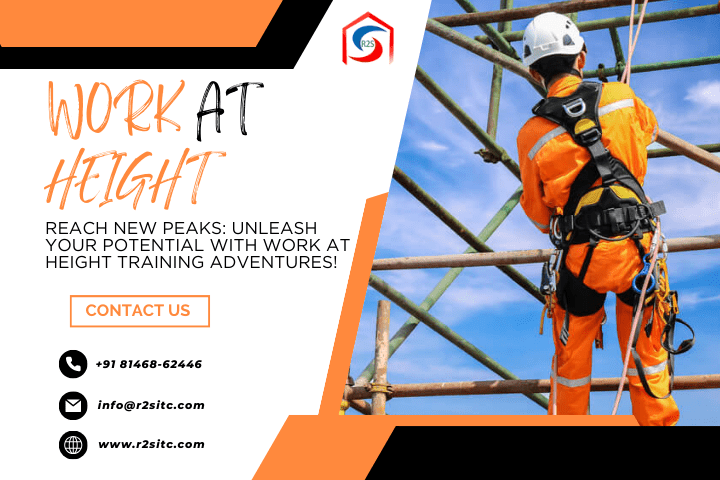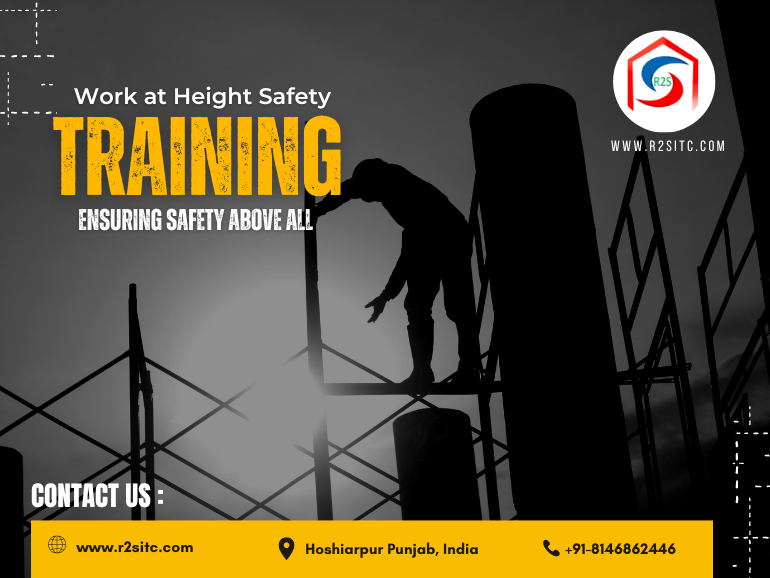Elevating Safety: A Deep Dive into Top Safety Practices for Working at Heights – Insights from R2SITC
Introduction:
Working at height has inherent risks that require special attention and extensive training to ensure the safety of everyone involved.In this comprehensive guide, we review the best safety practices when working at height, drawing valuable lessons from the expertise of R2SITC, the leader in safety training at height. By understanding and implementing these practices, workers and employers can foster a culture of safety, reduce accidents, and improve overall health in the workplace.
The essential need for safety training at height
Understanding the risks
Working at height poses countless risks, from falls to falling objects, so comprehensive safety training is paramount .We explore potential dangers, emphasizing the importance of proactively recognizing and addressing these risks.
Complying with laws and regulations
Navigating legal requirements is important for any organization involved in working at height.We discuss the regulatory landscape and how R2SITC’s training aligns with and exceeds these standards, ensuring legal compliance and building trust between both employees and employers .
R2SITC’s Approach to Safety Training
Comprehensive Training Programs
R2SITC’s training programs go beyond the basics, providing a comprehensive approach that includes theoretical knowledge theory, practical experience and the latest security technology.We explore how this multifaceted approach lays the foundation for a strong safety culture.
Integrating advanced technologies
Modern technology plays a central role in high altitude safety training.We look at how R2SITC integrates cutting-edge tools, such as virtual reality simulations and interactive platforms, to create rich and effective training experiences.
Personal Protective Equipment (PPE) and Fall Arrest Systems
The Role of PPE in Safety at Altitude
Properly fitted and well-maintained personal protective equipment is the foundation of safety all at altitude.We discuss the types of PPE recommended by R2SITC and the importance of regular testing to ensure optimal performance.
Learn about fall arrest systems
Fall arrest systems are essential to prevent serious injury in the event of a fall.We explore R2SITC’s focus on selecting, operating and maintaining these systems to the highest standards, always with worker safety in mind.
Practical Rescue Training and Emergency
Preparedness The Importance of Rescue Training
In an emergency, the ability to perform a quick and effective rescue is essential.We examine how R2SITC training programs incorporate real-life rescue scenarios, ensuring individuals are equipped to respond quickly and safely in unforeseen circumstances.
Emergency Preparedness
In addition to rescue training, emergency preparedness is essential.We explore R2SITC’s approach to emergency response training, including communication strategies, evacuation procedures and coordination with emergency services.
Behavioral aspects of safety at height
Nurturing a culture of safety
Safety is more than a set of procedures; it is a culture that must be integrated into all aspects of an organization.We discuss how R2SITC training emphasizes the behavioral aspects of safety at height, encouraging the mindset that safety is everyone’s responsibility.
Team communication and coordination
Effective communication and teamwork are the foundation for safety at height.We explore R2SITC strategies to promote clear communication and seamless collaboration among workers engaged in high-level tasks.
Conclusion: For a safer future
In summary, this journey to implementing safety best practices when working at height, guided by R2SITC’s expertise, highlights the importance of proactive approach, continuous training and ‘unwavering commitment to safety. By adopting and internalizing these practices, organizations can create environments where workers feel confident, protected, and empowered to perform their tasks accurately and safely. Raise your safety standards, heed the lessons of R2SITC and lead the way to a safer, more secure workplace. Visit R2SITC to enhance your skills.





